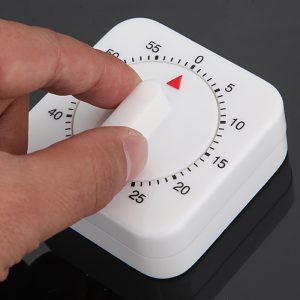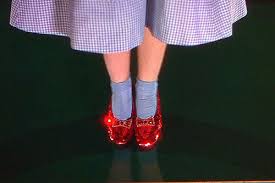When Laura Kelleher saw a Facebook contest to win a room makeover, she didn’t realize the full effect of uploading a photo of her messy playroom. The contest was the first annual ‘Home Makeover Facebook Contest’ run by NAPO-GPC as a way to celebrate January as GO Month, or ‘Get Organized Month,’ in order to offer encouragement to people to start the New Year off with less clutter, less stress, and more clarity. After being selected as one of five finalists, the Kelleher family was selected as the 2017 winner.
Laura and her husband Tom, of Horsham, PA, live in a quiet suburban neighborhood with their three active children. The playroom, which is the first visible space upon entering the house, is a hub of creativity and imagination, particularly for the two older boys, ages 6 and 10, who build with Legos, collect dinosaurs, decorate the room with their artwork, and have a large collection of cars, trucks and collectibles. Then there is their 10-month-old baby sister who is just starting to explore the world of her big brothers. Getting the playroom organized was becoming an urgent need with stray Lego pieces within their baby sister’s reach.
The overarching goal for organizing the room was based on the fact that both of their sons are autistic. The lack of a clear system for the boys to access their toys and art projects created stress and an inability to function smoothly at home. Although both Tom and Laura knew their boys would respond well to systems and order, the project was too overwhelming for them to tackle on their own.
So on March 31, eight organizers from NAPO-GPC volunteered their time and talents to plunge into the Kelleher’s playroom. After clearing the room of all toys, books, and games, the professional organizers assembled five IKEA shelving units, sorted and categorized the vast variety of toys, and then brought it all together into a beautiful, well-ordered system. Laura and Tom worked alongside the team making decisions and securing the units to the wall. When completed, there was an entire section devoted to Legos, a bookcase for all craft items and books, and bins specifically dedicated to toddler toys.
The team completed the makeover in under five hours and then they waited for the boys to arrive home from school. It was like a surprise party and Christmas rolled into one! Now the brothers could rediscover their treasures and everything had a place! Bins were labeled and lids protected against the dangers of small pieces. No longer a stress zone, the family could enjoy the playroom as intended.
Click on the above title to learn more about the featured author.
 So, I’ve been saying that a lot lately and not to who you would think. It’s been to inanimate objects! You know, the smoothie you start drinking again because you are going to give ‘that diet’ another go. Why do we address people and things this way? A matter of playful affection towards a friend who we’ve known since grade school? Used in jest as we put on our bikini for the first time in the Summer?
So, I’ve been saying that a lot lately and not to who you would think. It’s been to inanimate objects! You know, the smoothie you start drinking again because you are going to give ‘that diet’ another go. Why do we address people and things this way? A matter of playful affection towards a friend who we’ve known since grade school? Used in jest as we put on our bikini for the first time in the Summer?
As we sort through our things, we go through this playful or sometimes sinister game with these items:
Play the “Friends, Acquaintances and Strangers” game created by organizing guru Judith Kolberg:
Friends come and go and so do the things in our lives. If it doesn’t bring you joy, it’s time to say adieu. Keep the items you hold valuable close to you and enjoy!
Click on the above title to learn more about the featured author.
Is it possible to live in a small area? You bet it is!
Most of us know people living in small houses or apartments, going to college and living in a dorm for the first time, or moving from a big home to a smaller one. Even if you don’t, you may have experienced one of these situations yourself at some point.
Did you feel challenged trying to fit everything in your new space? Does the person you know feel challenged trying to do the same thing?
If you follow these five (5) tips, it really is easier than you think:
1. Divide the space into specific areas for each activity (e.g., bill paying, watching TV, hobbies, laundry, reading, or studying). Furniture and rugs can be used to separate the different activities. For instance, your bedroom may have to act as an office plus a place to sleep and get dressed. Use a desk and file cabinet in one area of the room and the bed, bureau, and night stand in another. Keep the items in their specified areas; do not let them wander into the other activity areas.
2. Use milk crates on shelves that allow of extra space between them and the ceiling. Position the milk crate so the opening faces out. This way you’ll be able to store things both inside the milk crate and on top of it. It acts as a second shelf.
3. Use over-the-door storage units or command strips to hang things on the back of doors, in closets or on walls. You can hang items in or on them to get the items off your bed, chair, table, or desk. Don’t let them end up on the floor. The best part about command strips is that they do not damage the walls.
4. Use wall shelves to take advantage of vertical space. You can use your walls from floor to ceiling for storage.
5. Take advantage of the space under your bed. Use clear plastic bins that are specifically designed for under the bed. Measure the amount of clearance you have between the floor and the bed frame to make sure the bin fits. An option that affords you more storage space is raising the bed.
Just think, when living in a smaller area, you’ll have less to take care of. That frees up your time to do the things you want to do!
 While I was going through items in a kitchen pantry with one of my clients, she commented on how easy it was to organize in the kitchen. When I asked why, she said that if food is expired it takes the decision out of her hands about whether to get rid of it or not. However, with the rest of the stuff in the home, she has to make the decision whether it has ‘expired’ or not. Deciding on the life cycle of your belongings is not easy, but when your spaces become too crowded or you can’t find your keys for the third time in one week, it’s time to take action.
While I was going through items in a kitchen pantry with one of my clients, she commented on how easy it was to organize in the kitchen. When I asked why, she said that if food is expired it takes the decision out of her hands about whether to get rid of it or not. However, with the rest of the stuff in the home, she has to make the decision whether it has ‘expired’ or not. Deciding on the life cycle of your belongings is not easy, but when your spaces become too crowded or you can’t find your keys for the third time in one week, it’s time to take action.
The life cycle concept is one way to work through the backlog of the accumulated clutter in the home and as a strategy to constantly weed out stuff. Our stuff has a life cycle that begins with it being most useful, most beautiful and most beloved. Over time our stuff becomes less useful (obsolete technology; items that wear out or break), less beautiful (fashion trends or our tastes change), and less beloved (reminders of past periods in our family’s life that may not be so important).
When you think about all of the items you bring in to your home on a weekly or monthly basis, it boggles the mind. But if you don’t take out as much as you bring in, over time you will begin to feel like your stuff is taking over. If some of your belongings are starting to become CRAP (Clutter that Robs Anyone of Pleasure), it’s time to consider whether those belongings are part of your family’s present and/or future. Keeping items from the past that no value or meaning to the present day leaves less room for additional items (or opportunities) for the future. For example, as your children grow, do you hold on to the toys they used to love, even though they don’t want them anymore?
Finally, if you are keeping items because you think they might be worth a lot of money, there are ways to find out. One way is to look on Ebay. Is anyone selling the item now? Has anyone sold that item in the last two weeks and for how much? Reputable auctioneers are also good resources for evaluating antiques and collectibles. Mass produced goods from 1960 or later have less of a chance to increase in value. But remember, regardless of what items may have been worth in the past; items are only worth what someone is willing to pay for them today.
When your clutter starts to take over your home, reevaluate whether the life cycle of those items is over or not. Someone else may be able to give your unneeded items a whole new life.
Clutter Quote: “Do not spoil what you have by desiring what you have not; remember that what you now have was once among the things you only hoped for.” Epicurus, ancient Greek philosopher
 Can you relate to this scenario? You’d been really good about keeping up with clutter and then came the holidays. Things got scooped up and hidden in closets instead of being put in their proper places. Since the New Year you haven’t even tried to tidy — you’ve been leaving items here, there and everywhere.
Can you relate to this scenario? You’d been really good about keeping up with clutter and then came the holidays. Things got scooped up and hidden in closets instead of being put in their proper places. Since the New Year you haven’t even tried to tidy — you’ve been leaving items here, there and everywhere.
BACKSLIDING is a common occurrence and can be rectified relatively easily. Here are some steps you can follow:
By following these guidelines, I guarantee the next time you have company or want to clean up, you’ll quickly be able to deal with the minimal clutter. By putting items in their assigned homes, you will save time and eliminate angst.
Click on the above title to learn more about the featured author.
 Relocation is one of those infamously “stressful” times of our lives. Even those of us who are veterans will admit to the fact that the sheer amount of facets that need to be managed during a move adds some level of anxiety.
Relocation is one of those infamously “stressful” times of our lives. Even those of us who are veterans will admit to the fact that the sheer amount of facets that need to be managed during a move adds some level of anxiety.
Whether moving near or far, change is part of the package – new people, new schools, new jobs, new neighborhoods, new neighbors and yes, a new home.
My husband’s corporate job moved us (a family of five) around the U.S. for a period of over 20 years. I realized from the very beginning that this would be a way of life for our family for quite some time. In order for us to not only keep our sanity but actually enjoy the adventure, I needed to have a plan. Essentially, my plan developed from taking a step back and seeing the big picture. I asked myself:
By answering these questions, I was able to prioritize the steps of our move and create a repeatable process to carry us through each successive relocation. I hope that my answers might help you look at your own family’s needs in the face of one or multiple moves.
What will our nomadic life look like?
Truth be told, many a friend and family member worried aloud about how my children would fare growing up without the consistency of a hometown, schools and friends. I chose to envision a life that would be enhanced by our travels – my children would learn that people are people wherever you go, no matter how they look or sound. They would experience cities and environments rather than merely reading about them – things like walking on Mt. Rainier (an active volcano), battling to walk down Michigan Ave while leaning into the Chicago wind, and watching dolphins jump in the coastal waters of Florida. I shared my vision and excitement with the rest of my family and let them know how lucky we were!
What can or will change?
Almost everything! As far as living spaces were concerned however, the changes involved the size and number of rooms and the amount of storage. Would the garage be large enough for cars, bikes and storage? Would there be a basement? Would the kids each have their own rooms or will they have to double up? Some changes were welcome, others less than desirable. Adding some creative storage and decorative accents always helped with the adjustment.
What can or needs to stay the same?
I decided that since all of our surroundings including most of the people would be changing, it would be important to preserve things that gave us “roots”. With each move I kept much of our décor the same, especially for the kids. I would hang their curtains right away and keep the same bedding. Those things changed at times when they grew out of them. We would have weekly letter-writing sessions in order to maintain relationships with family and friends. This had so many benefits: family time together, honing writing skills, honing relationship skills. I also made it a point to cook traditional holiday recipes so that we wouldn’t forget our family background and would feel connected on holidays when we couldn’t actually attend in person.
What will support each family member?
This is where organization really became essential. It is difficult to be successful, in anything and at any age, if your surroundings continue to change. Therefore, I would set up each home with consistencies. Kitchens were always arranged with table settings nearest the table and furthest from my cooking area so that kids could help and not be underfoot. Drawer items in kitchen, bedrooms and bathrooms were set up in similar order from house to house. Garage and laundry bins followed suit. Within no time, everyone knew where to find what was needed regardless of the new home layout.
Even though you may move often: embrace your life, be kind to yourself and your family and you can always be living at Home.
Click on the above title to learn more about the featured author.